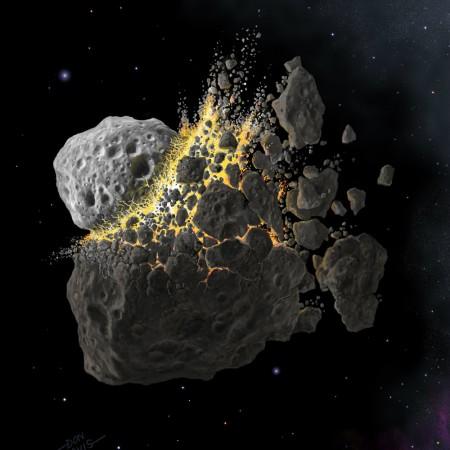
One of the key ingredients of life — phosphates — likely fell from space and helped kick-start life on Earth as we know it, say researchers.
A study by the University of Hawaii in collaboration with researchers from Taiwan and France have found new evidence that phosphorous compounds seen on Earth were generated in outer space. These compounds likely brought here by falling rocks in the form of meteors during the birth of our planet. The Earth is believed to be just over 4 billion years old.
The phosphorus compounds then incorporated themselves in all the biomolecules that are found in living cells on Earth, explains a report put out by the university. Researchers add that phosphates and diphosphoric acid both play a key role and are major components in molecular biology.
Together, they are the main ingredients that make up chromosomes and carry genetic information in which DNA is found. They are also found in phospholipids in cell membranes as well as in adenosine triphosphate—energy carriers in cells—together, they form the self-replicating material in living organisms. Replicating cells, says the report, is one of the indicators of life and without these compounds, life itself might not be possible.
Phosphorus, in fact, is so important for life that it is seen as one of the reasons why it is not so widespread in the universe. There might not be enough phosphorous in all of the universe to support life everywhere.
"On Earth, phosphine is lethal to living beings," said Andrew Turner, lead author of the study.
"But in the interstellar medium, an exotic phosphine chemistry can promote rare chemical reaction pathways to initiate the formation of biorelevant molecules such as oxoacids of phosphorus, which eventually might spark the molecular evolution of life as we know it."
Researchers, as part of the study, replicated interstellar icy grains in a vacuum chamber at -450°F to replicate the conditions of outer space. The grains were coated with carbon dioxide and water and exposed to ionising radiation, just like it is in the space. As a result of this, multiple phosphorous oxoacids were formed, notes the release.
The phosphates that were created would then need to be implanted in planets, moons, and eventually get to Earth. This is where meteors come to play. Clusters of meteors in the form of meteor showers could have rained down on Earth in its early days, making the compounds available at just the right time.
The research titled "An Interstellar Synthesis of Phosphorus Oxoacids," was first published in the journal Nature Communications.









